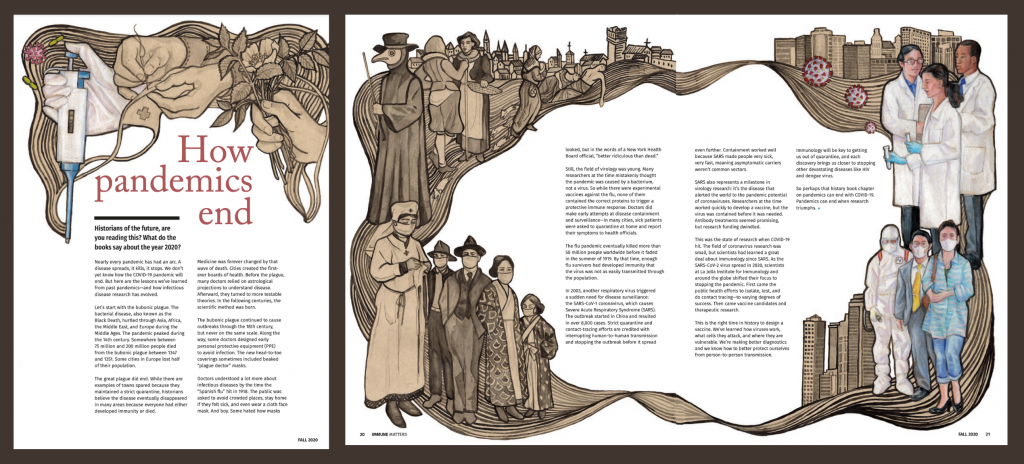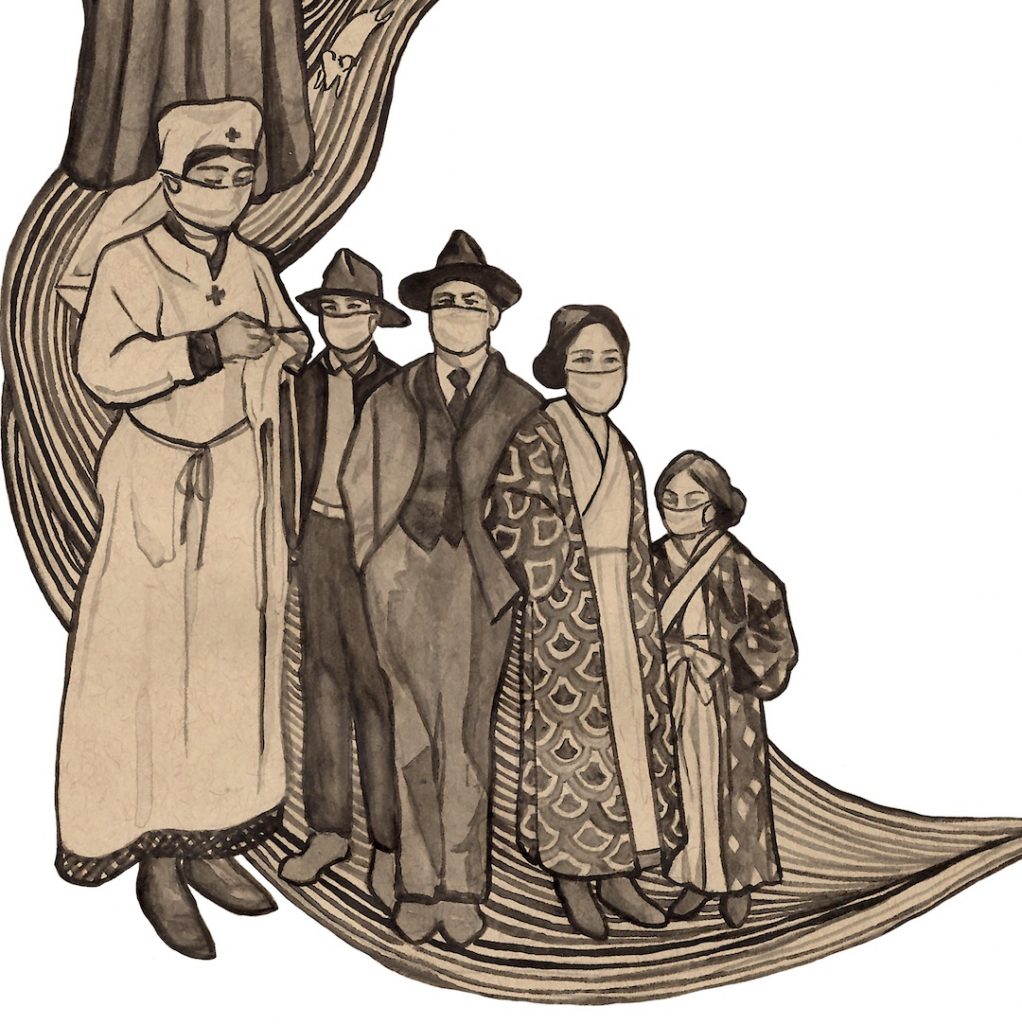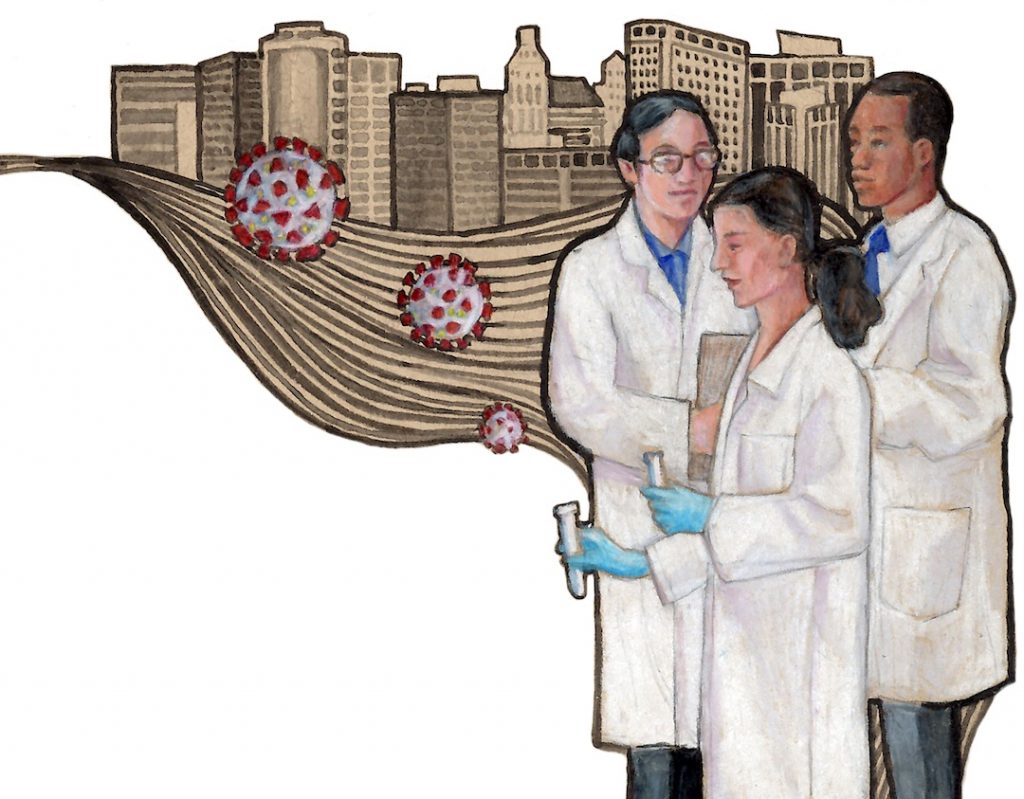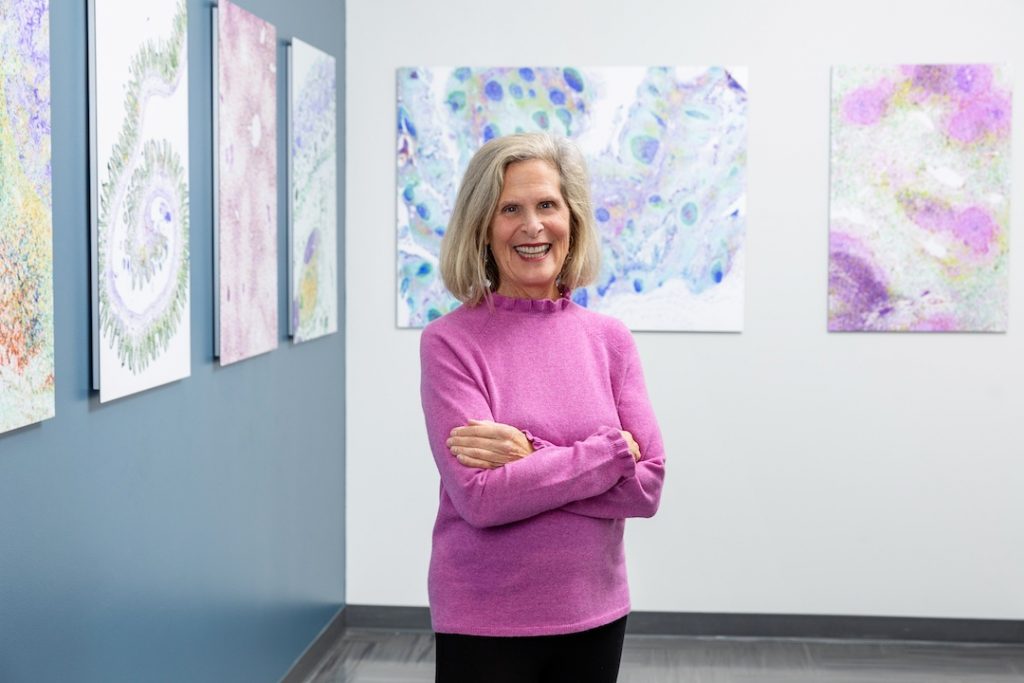Life during COVID-19 has had a way of putting past pandemics in context.
The Fall 2020 issue of Immune Matters included an original illustration from San Diego artist Patricia Pauchnick. The goal of the piece, which ran alongside the article “How Pandemics End,” was to show how past pandemics affected real people—and how science today is connected to a long history of infectious disease research.

We talked with Pauchnick to learn how she took on this challenge:
What kind of background research did you do before sitting down to do the illustrations?
Before creating the illustrations for “How Pandemics End,” I looked at a lot of imagery from the Middle Ages, the 16th century, the 1918 influenza pandemic and the SARS epidemic in 2002. Photography existed in 1918 and 2002, so we have a good idea of what personal protective equipment looked like during those time periods. As for the bubonic plague in the 1300–1400s, most of our visual evidence exists in the form of woodcuts and other artwork, so I put together a collection of these images to refer to for the illustrations. I also did a lot of research on plague doctors and found their beaked masks from the 16th–17th century completely fascinating. Most of the visuals we have of plague doctor garb are from artistic renderings, but a 16th century mask does exist in the German Museum for the History of Medicine in Ingolstadt, Germany.
Which images through history stood out to you?

The photographs of the 1918 influenza pandemic were the most striking to me because they seem hauntingly similar to today. In relation to our current moment, the style of masks haven’t changed much, and the fact that we can see photographs from that era makes it seem all the more real and recent. It also wasn’t that long ago in the context of pandemics and human civilization. Looking at these photographs made me feel a certain kinship with these people in history—a strange sense of camaraderie. At the same time I feel grateful to live in a time where scientists understand viruses and vaccines as well as they do.
Can you describe the process of actually making the illustration?
I started the illustrations with lots of sketching. I made several preliminary drawings and mock-ups of Medieval architecture and dress based on woodcuts from the time period. Also, I made several practice sketches of people wearing 1918-era clothing. It was important to me that the imagery in the illustration be accurate to each time period. Afterwards, I sketched the illustrations on tan paper to represent the look of time-aged paper then painted them with liquid ink and a brush. The parts of the illustration depicting the contemporary era were drawn with colored pencils.
What images or scenes from the COVID-19 pandemic do you think will stick with us?

The masks, empty grocery store shelves, Zoom grid, PPE-clad healthcare workers, six foot markers, and graphs of “the curve” are images that I think may collectively represent this pandemic as time goes on. However, I think each person living through this moment will also have a set of personal images that will stick with them. We will all remember where we were during mid-March when quarantine began. Those who lost family members will have potent images that they can never shake. Hospitalized patients who recovered from Covid will remember their empty room devoid of visitors. Doctors and healthcare workers will also have their own unique experiences etched into their memories. I hope all of these images—both personal and universal, with all the emotional impact they carry—can help inspire us to move forward into ever-better eras of science and research.




